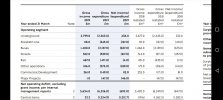Before covid it was said often that the underground is the only profitable element of public transport in London. I was wondering how did it compare to Metro routes on national rail and the DLR?
Why would the DLR also not be profitable given the areas of extremely high population and density it now passes through and lack of station staffing? Or perhaps that is why as no need to get a ticket and can risk not being checked? Is shorter trains another factor?
For someone in Stratford, Canary Wharf or Lewisham where the DLR was packed day in day out so how was it not profitable? I can't think of any area or branch now where it wasn't super busy before the pandemic. Frequencies were also very high though a tad below the tube in some areas.
Did TfL have a target for when it would break even?
And I don't supposed TOCs break down metro only routes v long distance (where possible)?
Why would the DLR also not be profitable given the areas of extremely high population and density it now passes through and lack of station staffing? Or perhaps that is why as no need to get a ticket and can risk not being checked? Is shorter trains another factor?
For someone in Stratford, Canary Wharf or Lewisham where the DLR was packed day in day out so how was it not profitable? I can't think of any area or branch now where it wasn't super busy before the pandemic. Frequencies were also very high though a tad below the tube in some areas.
Did TfL have a target for when it would break even?
And I don't supposed TOCs break down metro only routes v long distance (where possible)?
Last edited:

